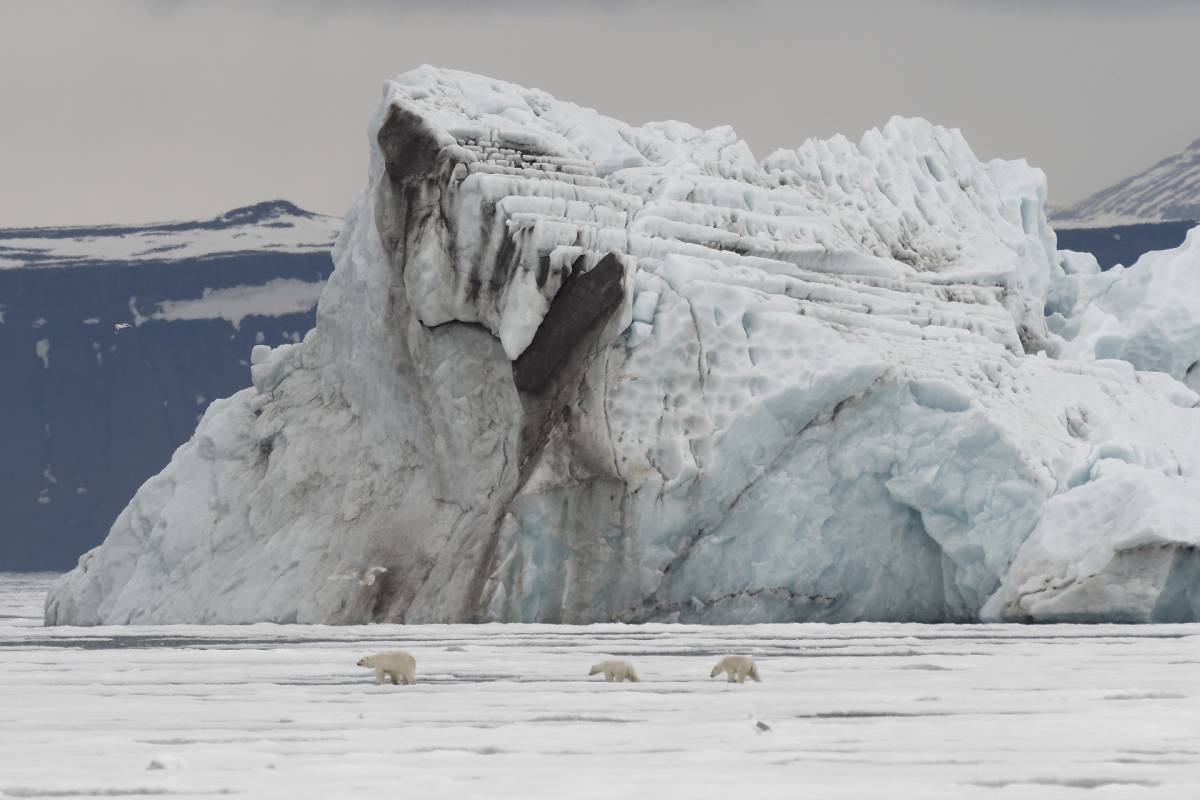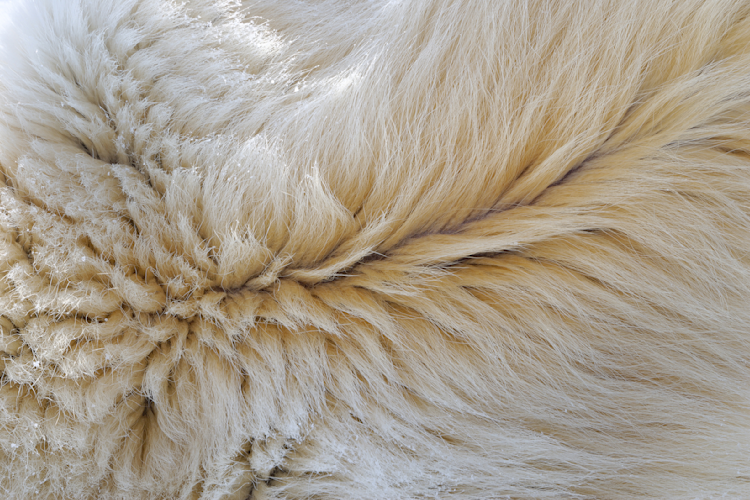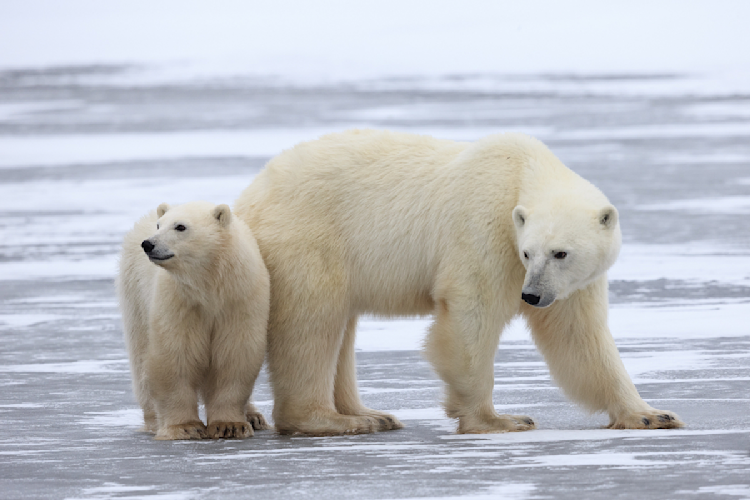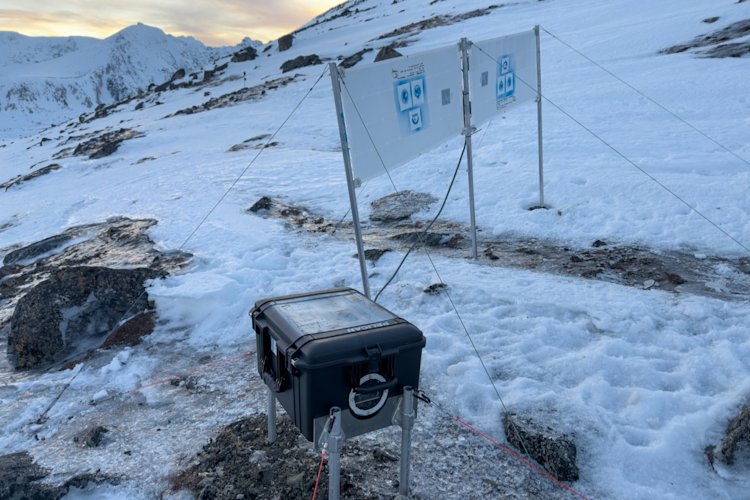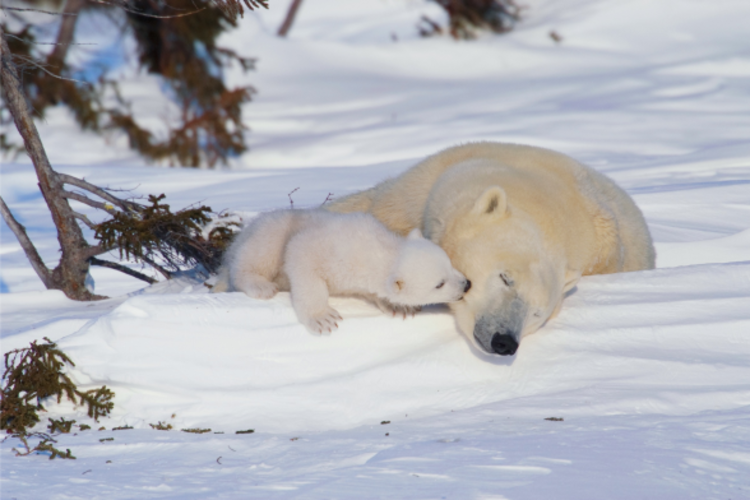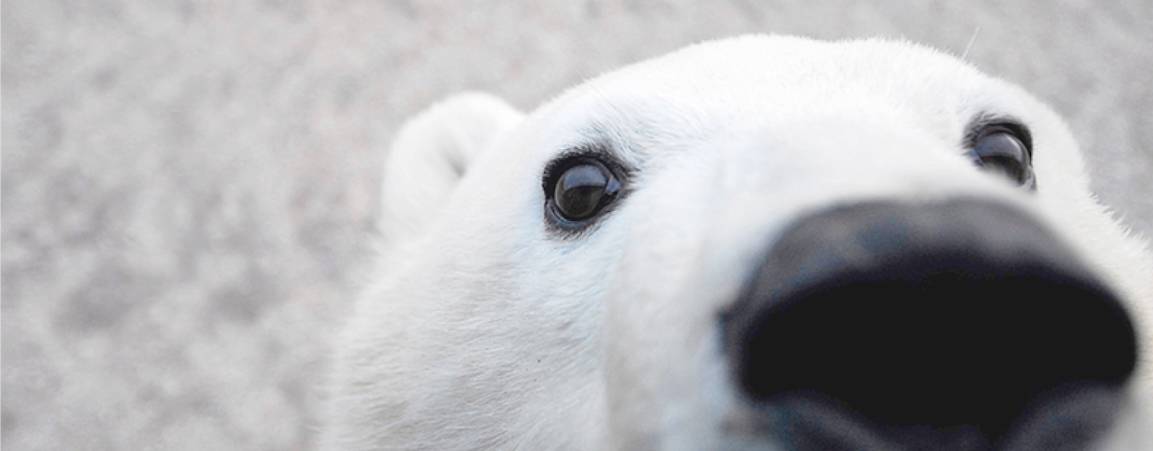This type of potential maternity denning habitat is limited in distribution and is only possible in heavily glaciated regions of the Arctic where calving of marine-terminating glaciers form icebergs large enough to drift away, become grounded offshore, and remain in place for months or years. Although northeast Greenland has long been known to be an important maternity denning area for polar bears, with reports of dens on land as well as sightings and captures of females with young cubs in the spring, the use of snowdrifts around grounded icebergs for maternity denning had not been scientifically documented before.
Why icebergs?
Of course, one of the first questions that comes to mind when finding maternity dens in a new habitat for the first time is whether there might be something different ecologically about them. For example, one major ecological difference in the terrestrial habitat in northeast Greenland is that it is a polar desert, meaning there is little snowfall. Consequently, there is much less snow for forming suitable drifts for denning. However, when we compared the basic habitat needs of pregnant polar bears, including predictable and stable overwinter habitat, the discovery was less surprising but equally fascinating.
Overall, it appears that the driving factors determining the long-term fidelity of adult females to maternity denning habitat by grounded icebergs are much the same as those that characterize terrestrial maternity denning habitat elsewhere in the Arctic. These include: 1) annual predictability of abundant suitable snowdrifts for denning; 2) abundant habitat; 3) stable snowdrifts because of very cold conditions; and 4) proximity to rich feeding grounds in spring, in this case the biologically productive Northeast Water Polynya (an area of open water surrounded by ice), where seals are abundant and accessible for hungry females with cubs shortly breaking out of their dens in the spring.
Thus, for the moment, the combination of features described above creates an excellent maternity denning habitat for pregnant females in the autumn, for much the same reasons that they dig dens on land in other parts of the Arctic. However, the continued decline of sea ice throughout the Arctic as a consequence of continued climate warming may eventually have a negative influence on the stability of grounded icebergs as sites for maternity denning if break-up expands into new areas or occurs earlier. Similarly, it is uncertain what the effects of increased human activity might be in nearby offshore areas because of their greater accessibility as the sea ice declines in future decades. These will be important issues to monitor in future years.
Dr. Kristin Laidre is a research scientist at the University of Washington and a biologist with the Greenland Institute of Natural Resources. Dr. Ian Stirling is an adjunct professor with the Department of Biological Sciences, University of Alberta, and a research scientist emeritus with Environment and Climate Change Canada.
